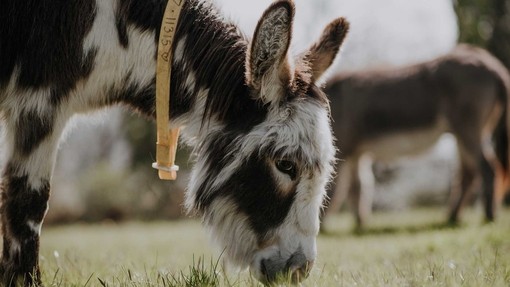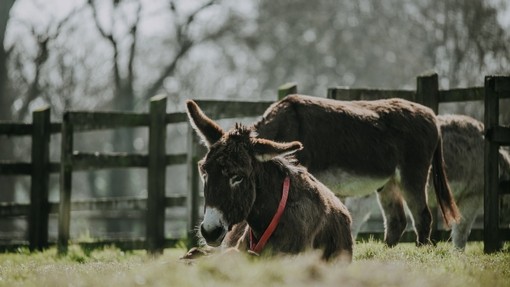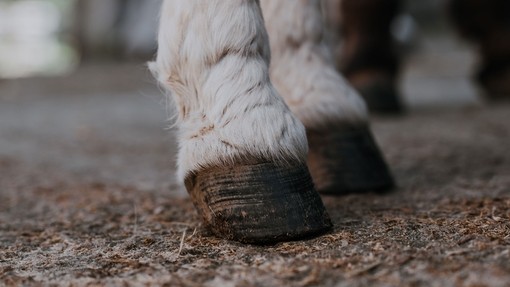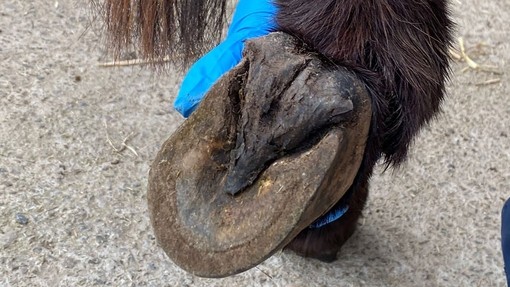What causes laminitis?
- Access to too much grass
- Access to cereal or other sugar-rich feed
- Endocrine (hormonal) conditions
- Equine Metabolic Syndrome (EMS) is a condition likened to type 2 diabetes in humans as it involves insulin regulation. EMS is commonly linked to laminitis.
- Pituitary pars intermedia dysfunction (PPID) or ‘Cushing’s disease’ involves excessive production of hormones, caused by a benign enlargement of the pituitary gland in the brain. Increased levels of hormones in circulation have effects all over the body, including making these donkeys more susceptible to laminitis
- See our Endocrine disorders in donkeys for more information.
- Severe lameness in one foot can cause excess weight to be taken on the opposite foot. This is known as ‘overload laminitis’
- A serious infection which leads to sepsis as bacteria enters the blood stream eg pneumonia (chest infection)
- A serious inflammatory illness such as colitis (inflammation of the gut)
- Stress, something which donkeys are extremely susceptible to. Causes of stress can include travel, changes in management and the loss of a companion.).
What are the signs of laminitis?
Lameness indicates pain in a limb. Never leave a lame donkey until tomorrow.
Donkeys have a stoic nature, sometimes they behave differently to horses when they are suffering from foot pain.
The signs of laminitis may include:
- lying down more than usual
- taking shorter steps when walking, also known as ‘pottery’ gait
- subtle shifting of weight when standing
- heat in the hooves
- a strong pulse on either side of the fetlock (digital pulse)
- dullness
In long-standing cases of front foot laminitis there may be a loss of muscle over the shoulder area, as the donkey attempts to take most of its bodyweight on the hind limbs.
Evidence that a donkey has suffered from bouts of laminitis can be seen as ‘laminitic rings’ on the hoof wall. These can be distinguished from other ‘event rings’ (eg sudden changes in diet) because they are not parallel with each other but spread out towards the heel.
See images below of typical chronic laminitic hooves.
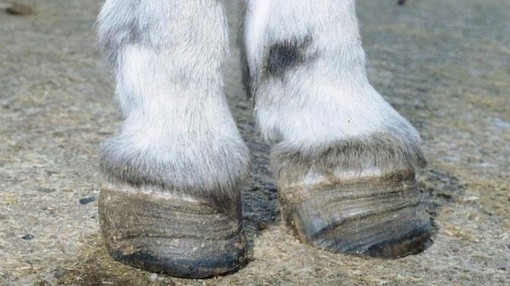
Care for donkeys with laminitis
Prompt diagnosis combined with appropriate care can save a donkey’s life.
If you suspect your donkey has laminitis you must:
- call your vet immediately to arrange an urgent visit. As with many diseases, prompt treatment can make all the difference to the outcome for your donkey
- provide a deep bed with bedding that will mould around the hoof and provide support, such as shavings or straw
- ensure easy access to food and water.
Your vet will examine your donkey and will advise you on suitable management, which may include whole sole supports for the feet, dietary management and restricted exercise in the acute phase of the condition. It is likely that your donkey will need painkillers and they may need additional medication.
Your vet may x-ray your donkey’s feet to gain valuable information about the severity and prognosis. X-rays can also be used to guide your farrier if they need to trim your donkey’s feet.
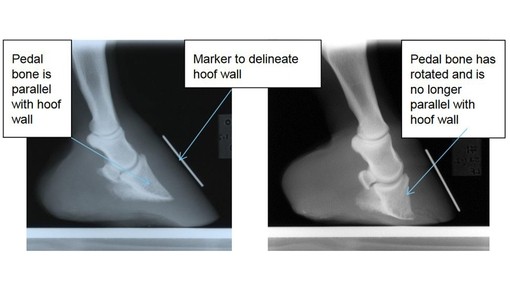
Whole sole supports
Whole sole supports may be necessary to help provide support for the pedal bone and to make your donkey more comfortable. Note that frog supports, commonly used in horses and ponies, are not suitable for donkeys. Your vet may suggest additional tests, including a blood sample, if they suspect EMS or PPID.
Diet
Your donkey’s diet will need to be managed extremely carefully so that the condition does not get worse, and to prevent future attacks. A high-fibre low-sugar diet, limited access to grass, and weight management will go a long way to preventing laminitis. For some donkeys even a few mouthfuls of grass can lead to an attack; grass that is lush or that has a build-up of sugars, as a result of dry weather or following a frost, is particularly dangerous.
Never put a donkey on an extreme diet in order to manage laminitis.
Always plan weight loss over long periods using a diet of predominantly barley straw, along with a vitamin/mineral supplement and limited access to grass. Donkeys with dental disease require a slightly different diet, but it should still be low in sugar and high in fibre.
Remember that donkeys with endocrine conditions such as EMS and PPID are particularly susceptible to laminitis if their diet is not managed. See our Feeding the donkey with laminitis resource for more information.
It is possible for donkeys to recover from acute laminitis with the correct veterinary care and management and go on to live a good quality of life. These donkeys will always be more susceptible to future bouts of laminitis and they may have chronic laminitic changes to their feet so they will need to be observed closely for the rest of their lives.
Remember that prevention of laminitis is always better than cure.
There will be cases where there are irreversible changes to the position of the pedal bone and your donkey may suffer constant foot pain.
A short-striding, ‘pottery’ donkey is likely to be in considerable pain.
If painkillers do not alleviate the condition it may be necessary to consider the quality of life and make a responsible decision in the best interests of the donkey. It may be that euthanasia is the only kind option.

